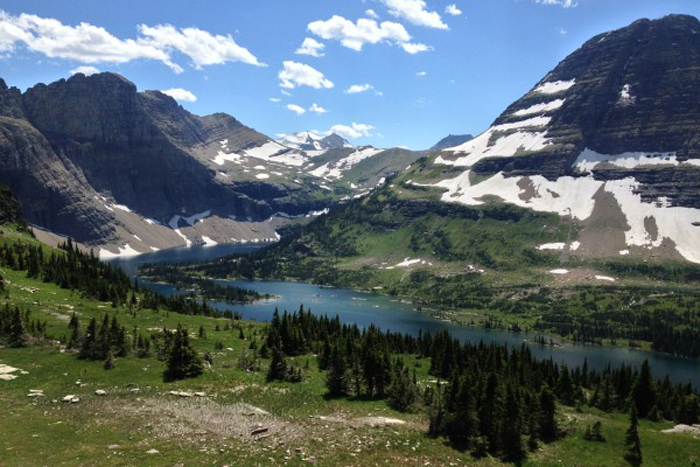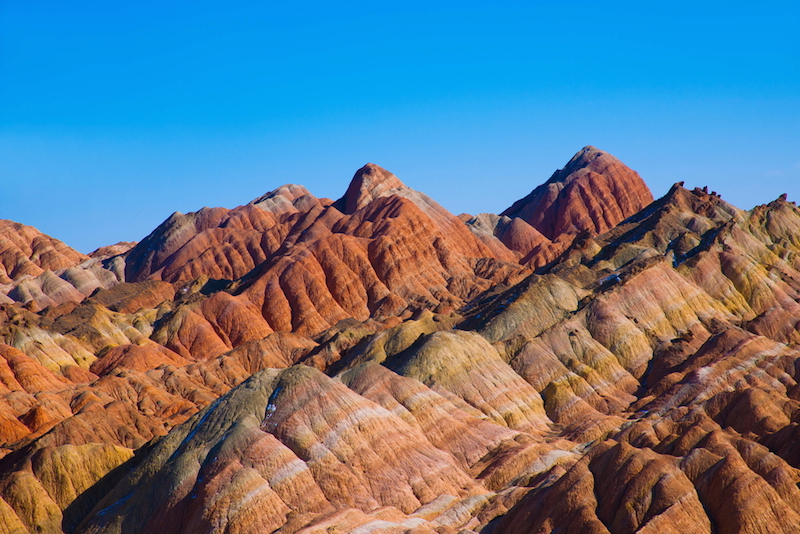Fading Gems: 10 Places to Visit Before They're Gone

Earth Day is a time to celebrate and protect the pale blue dot we call home. But some of its crown jewels may be vanishing.
Many parts of the globe face threats from warming temperatures, sea level rise, drought, and other effects of climate change and human activity.
Here are 10 amazing places to visit before it's too late. [Images: One-of-a-Kind Places on Earth]
1. Tuvalu
This Polynesian island nation, located between Hawaii and Australia, may be a tropical paradise, but it risks becoming submerged by rising seas as a warming climate melts ice sheets and causes water to expand. The islands — which are home to about 10,000 people — lie just 6.6 feet (2 meters) above sea level. Currently, seas there are rising at a rate of about 0.2 inches (5 millimeters) per year since 1993, compared with the global average of 0.11 to 0.14 inches (2.8 to 3.6 mm) per year, satellite data show. Experts predict that, even with a conservative greenhouse-gas-emissions scenario, sea levels in the region will rise by up to 17.7 inches (45 cm) by 2090, according to a report by Australia's Pacific Climate Change Science Program, and such a rise could make Tuvalu uninhabitable.
2. Glacier National Park
True to its name, this Montana park — which borders the Canadian provinces of Alberta and British Columbia and spans more than 1 million acres (4,000 square km) — was once home to hundreds of glaciers, but these stunning icescapes won't be around forever. Most of the 150 glaciers present in 1850 were still there when the park opened in 1910. But as of 2010, only 25 glaciers remained, and some climate models predict that the park's biggest glaciers will be gone by 2030, according to the U.S. Geological Survey.
Get the world’s most fascinating discoveries delivered straight to your inbox.
3. Great Barrier Reef
Few snorkel spots are as well known as Australia's Great Barrier Reef. But as humanity pumps more and more carbon dioxide into the atmosphere, the oceans absorb more of the gas and become more acidic. The increased acidity affects creatures like coral that use calcium carbonate to form their shells, and the Great Barrier Reef could be one of the first casualties. Over the past three decades, half of the reef has vanished, according to a study published in 2012 in the journal Proceedings of the National Academy of Sciences. [Photos of Great Barrier Reef Through Time]
And the Intergovernmental Panel on Climate Change (IPCC) estimates that by 2050, 97 percent of the reef's corals could suffer annual bleaching, or loss of the symbiotic algae that live inside, Scientific American reported.
4. The Alps
A favorite vacation spot for skiers and outdoor enthusiasts alike, the Alps may be in trouble. The region has been warming at about three times the worldwide average, according to a 2006 report by the Organization for Economic Cooperation and Development. By the end of the century, those giant chunks of ice could be nearly gone, researchers at the University of Zurich in Switzerland reported in a 2006 issue of the journal Geophysical Research Letters. Their prediction was based on a computer model.
Skiers aren't the only ones who will be affected by the warming temperatures — the Alps also supply about 40 percent of Europe's freshwater, Live Science reported previously.
This vast tract of South American jungle — the largest and most diverse tropical rainforest in the world — is now under threat from climate change. A 2009 study from the U.K. Met Office found that a global temperature rise of just 3.6 degrees Fahrenheit (2 degrees Celsius) above preindustrial levels would cause 20 to 40 percent of the Amazon rainforest to die off in the next century, while a rise of 7.2 degrees Fahrenheit (4 degrees Celsius) could decimate 85 percent of the rainforest, according to a study submitted to the journal Nature Geoscience in 2009. The rainforest is home to some incredible animals, such as the capybara — the world's largest rodent — and the Amazon pink river dolphin. [Biodiversity Abounds: Stunning Photos of the Amazon]
6. Kiribati
This Pacific island nation was the first country to announce that global warming is rendering its lands uninhabitable, and to ask for help in relocating its population. Melting ice and thermal expansion will cause global sea levels to rise by 1 to 3 feet (up to 1 m) by the end of the century, the IPCC estimates. The rising seas would submerge the country's 33 atolls and coral islands, most of which lie only about 3.3 to 6.6 feet (1 to 2 m) above sea level. However, some ocean currents may protect Kiribati from the impacts of global warming, according to a 2012 study published in the journal Nature Climate Change.
7. Venice
This romantic Italian city of canals and masked carnivals is slowly sinking, studies show. The city is naturally subsiding at a rate of about 0.03 to 0.04 inches (0.8 to 1 mm) per year, while man-made activity is causing it to sink an additional 0.08 to 0.39 inches (2 to 10 mm) per year, according to a 2013 study published in the journal Scientific Reports. As the ground subsides, the city becomes even more vulnerable to flooding, whichcould make the metropolis uninhabitable by the end of the century, some experts say.
8. The Dead Sea
The famous salty lake that lies between Israel, Palestinian territory and Jordan has long drawn tourists and pilgrims to its shores for the supposed health benefits of its mineral-rich waters. But the lake has been drying up, due to diversion of water from its main tributary, the Jordan River, in addition to mineral mining operations in the South. As the water recedes, freshwater has entered in its wake, dissolving salt deposits and spawning gaping sinkholes that open up without warning.
9. Gansu province, China
China's Gansu province, home to the stunning multicolored rock formations of Zhangye Danxia Geological Park, is one of the driest parts of the country. The province is already feeling the effects of climate change, as warming temperatures bring on droughts and shrink glaciers in the Himalayas and central Asia, which feed China's rivers.Up to 28,000 of the country's rivers may have disappeared since the 1990s, according to China's first National Census of Water.
10. California
The Golden State may have it all, from beaches to mountains to redwood forests. But California is suffering one of the most severe droughts on record, which has prompted authorities to institute statewide water restrictions. The Sierra Nevada snowpack, which supplies about 30 percent of the state's water, was at its lowest in more than 100 years, according to the most recent survey. And thanks to a changing climate, such droughts could become the norm, studies suggest.
Editor's Note: This article was updated at 1:04 p.m. ET April 22, to state a more correct record of the Sierra Nevada snowpack.
Follow Tanya Lewis on Twitter. Follow us @livescience, Facebook & Google+. Original article on Live Science.





